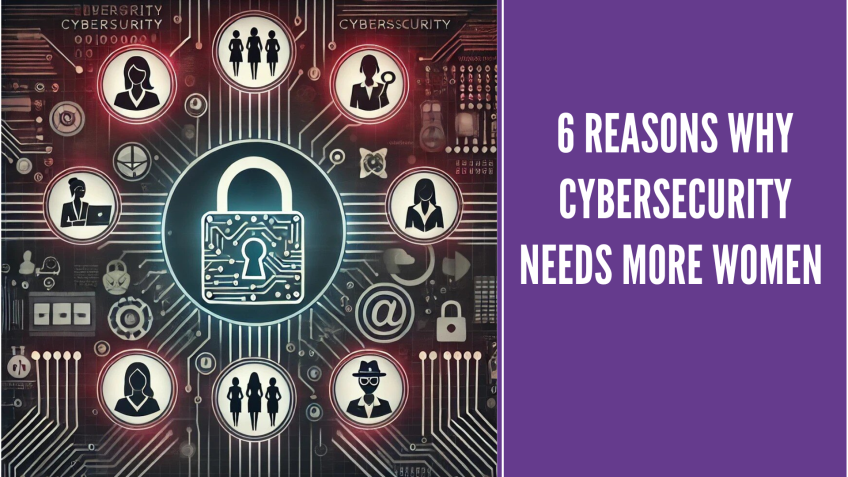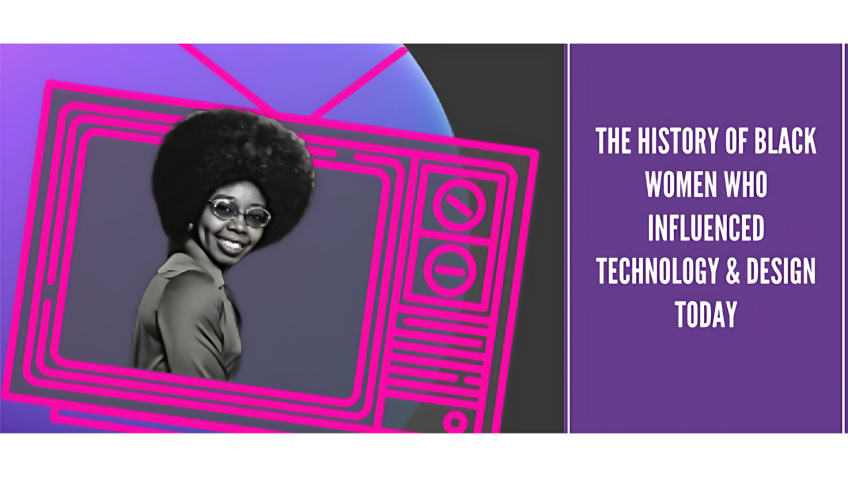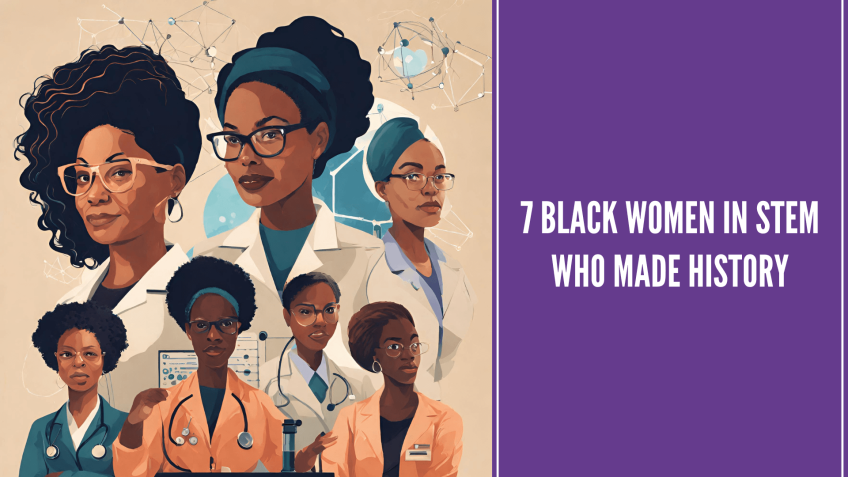Coding to impart the 4Cs of education - 21st Century skills by Madhumalti Sharma
Empowering Women in Tech at the Women Tech Conference
Welcome to an enriching discussion at the Women Tech Conference, where we delve into some intriguing facts, stats, perspectives, and strategies for empowering girls and women in STEM fields. Remember, STEM stands for Science, Technology, Engineering, and Mathematics and it is of paramount importance in the digital age.
The Status of Women in STEM
With women making up only 33% of researchers worldwide, 35% STEM students in higher education, and 28% graduates in engineering and just 5% in maths and statistics, it is clear that women are in the minority in STEM fields. Even in Artificial Intelligence, women's representation is relatively low, standing at 22%. The implications are mammoth considering the impact of AI on societal priorities - we are inevitably placing the future of digital economy, research and development under the overwhelming influence of a male-dominant workforce.
Despite the odds, women are slowly but steadily making their mark in board positions in STEM industries, with their representation rising to 19% in 2020. However, it's pivotal to drive this momentum and ensure women's significant role in shaping the future of the digital economy.
The Imperative of Coding
How can we foster the rise and future of women in STEM? It is by transforming young girls from consumers to creators using technology and coding! Here are five reasons:
- Creativity Catalyst: Coding is a brilliant medium to express oneself through stories, animations, games, and apps. It truly gives flight to creativity.
- Develop Computational Thinking: Logical thinking is at the heart of coding, promoting problem-solving in a systematic, broken-down approach.
- Boost Problem Solving: Coding is one practical way to learn the process from problem definition to its solution.
- Open up Career Paths: With technology around us at every turn, coding serves as a key to various career doors.
- Fun and Interactive: Through coding, children have the opportunity to construct the games or apps they always wanted, making it a fun activity.
Keeping these points in mind, it's essential for education systems to empower students with skills that are transferable across domains and meet the requirements of the future.
The Education System - Ready for Future?
Diving deeper into the discussion, there arises an important question - 'Are our education systems preparing students for the future jobs and technologies that don't exist yet?' This question sparked a vibrant interaction among the attendees, with more than 50% believing that the education system isn't wholly equipped for this task.
Future-Ready Skills
The skills that individuals need to be future-ready include problem-solving, coding, creativity, digital education, basic knowledge, critical thinking, and tech affinity. The most emphasized of these skills is problem-solving, which remains significant in any era or discipline.
The four Cs - Essential Skills for the 21st Century
Present education systems need to focus on the four Cs - Creativity, Critical Thinking, Collaboration, and Communication. They form the bedrock of 21st-century learning and need to be integrated within all subjects to equip students for the real world. Therefore, it is through the lens of these four Cs that we'll further explore the potential of coding in education.
Coding and the Four Cs
1. Creativity
Coding provides an open canvas for students to express their imaginative ideas, design unique solutions, and make their ideas tangible. From designing a project path for curbing deforestation to creating patterns through graph paper programming, coding offers numerous possibilities to blend creativity with subject understanding.
2. Critical Thinking
Critical thinking is the core of coding. It requires breaking down problems, evaluating the data explicitly, and leading to better decision-making. By studying phenomena like natural disasters via coding projects, students synthesize information, compare data, and draw conclusions.
3. Communication
Through coding, students learn to express, articulate, and share their ideas effectively. Projects around fire prevention methods or analysing air quality help students to communicate their findings, compellingly and clearly.
4. Collaboration
Coding creates a platform for students to work collaboratively, share responsibilities, and achieve a common goal. Whether it's a science project or developing a mobile app, coding encourages teamwork and flexibility.
Empowering the Next Generation: Beyond Coding
While coding is one avenue, multiple strategies and initiatives, like hackathons, maker space events, and developer challenges, can prepare students for the future. Organizations like Technovation, Coder Dojo, and Lego First Global Max provide abundant opportunities for girls and young students to explore and enhance their STEM skills.
In conclusion, the four Cs of Creativity, Critical Thinking, Communication, and Collaboration underpin 21st-century learning. Integrating these skills across all subjects, particularly through coding, is an impactful way to prepare the up and coming generation for the future world.
Video Transcription
So welcome everyone. A very warm welcome to all of you who are here at the Women Tech Conference. I'm delighted to be here with you today. I want to start by sharing some stats about girls and women in tech.Uh specifically ste uh stem actually not just technology and stem as many of you know, stands for science, technology, engineering and mathematics. So many of you may know that the number of women worldwide working in STEM is very low. 33% of the researchers worldwide are women.
35% of STEM STEM students in higher education. Globally are women. 28% of graduates in engineering and 40% in computer science majors are women. 5% of all maths and statistics students globally are women. So women still are a minority and make up only 28% of the workforce in stem.
22% of professionals working in artificial intelligence are women. And as you know, the impact of artificial intelligence on societal priorities is huge. And the under representation of women's contribution to research and development is a concern. Women need to be part of the digital economy to prevent perpetuating traditional gender bias. The number of women on board positions in stem related industries in 2020 was 19% and women make up only 3% of stem industry. C So what can we do for the rise and future of women in stem Children today are born with technology at their fingertips. They're using a mobile phone even before they learn to speak or walk. Young girls are on social media using Snapchat filters, vlogging, commenting, playing mobile or PC games and the likes it is time to move them from being consumers to creators using technology and coding is a way to do that. So some of you will possibly ask me, you know, why should they or why should we learn to code? Here are five reasons why. And this is a little infographic that I created myself. The first one is, it gives flight to creativity. It's a great way to express oneself by creating stories, animation games, apps using code. Second, it helps to develop computational thinking. It is important to learn how to break down a problem into smaller components and then tackle them in small chunks to it.
Boosts problem solving, starting from defining a problem. All the way to finding alternative solutions is a great skill to have for life in general. Fourth, it opens career paths. We are surrounded by more and more technology every day. We need more people who understand how it works and who can come up with new applications to make things better. And fifth lastly, it's fun. It's a great way to make the perfect game that we could not find yet or an app that will help grandma dictate a message that can be sent to us. Children are intrinsically curious and creative. It is the responsibility of the education system to help them learn skills that are transferable across domains. I would like to pause and ask you a question. Do you think that education systems are preparing the students for the future jobs and technologies that don't exist yet?
To answer this question? I will request you to head over to slido.com SL, id.com and answer the question there. So on the computer screen, it will ask you to enter a code and you should enter the code. Women tech 2022 and then answer this question for me. So maybe some of you are already familiar with Slido. And uh if you are not either on your phone or your browser, you can head over to Slido SL ID, o.com and answer the question over there. Do you think that education systems are preparing the students for the future of jobs and technologies that don't exist yet? I can see some of you are already in and are on it for those who are not, I'll just give it a couple of uh seconds. So you can go in and try to answer the question. So you on your browser or your phone, you will go to Slido Sl id.com and you're asked to enter a code and there you will enter Women Tech 2022. So womentech 2022. And please answer the question. Do you think systems, the education systems today are preparing students for the future jobs and technologies that don't exist yet? So yes, I can see some of you going in and entering. This is very, very good. I will still give it a couple more seconds for the others to join in as well. Let me see. Yeah, so I'm expecting some more answers. I see that we are um more than 23 people in here. So I'm expecting a few more answers, please.
So either on your browser or your phone if you just go to slido.com and enter the code. Women tech 2022. So maybe I can type it out for you slido.com and then you go and enter the code women, text 2022 and answer the question that shows up over there that do you think the education systems today are preparing the students for future of jobs and technologies that don't exist yet?
OK. So I see some of you have answered the question over here and 67% of you are saying not really. Oh, the numbers have changed with more people in wonderful. Oh, there is, there are some people who think that yes, it is completely preparing the students for the future. 25% say not, not at all. And 50% say not really. Some people are saying mostly ok, which is wonderful to know as well. So I'm going to give it just a couple more seconds to make sure everyone has had a chance to get their voice heard and participate in this poll. I'll be very curious for those who say yes, completely or yes. Mostly which countries you come from and what makes you think like, what are the things which are part of the education system that uh help to prepare the students? OK. So some more answers coming in. So I will close the poll at this and I have 50% saying not really 17% saying not at all and 17% saying yes completely and yes, mostly each. OK. This is, this is uh very, very interesting to know from all of you about this. OK? I will now go in and ask you one more question, please. So on the same place that you are on slido.com, you will be able to see the next question show up.
And this is which skills do you think we need to impart students in order for them to be future ready? So you can enter whatever word comes to your mind or whatever you think is the important skill that we need to equip Children with. So it could be problem solving, coding, creativity, whatever you think is an important skill and I'll be able to see the answers in a word cloud. So whatever words you enter will actually show up. And those who are familiar with word clouds would know if the word is an is actually given several times, then it appears bigger in the word cloud. I will share all these with you uh later on in the form of an image or picture because I'm not able to share my screen. But uh it would be very interesting to know what skills you think we need to impart to the students to make them ready for the future. OK. Yes, I can see uh beautiful word cloud forming, problem solving, creativity, coding, digital education, basic knowledge, critical thinking, tech affinity, very, very nice uh very, very nice skills that you are coming up with. This is beautiful.
Uh I see problem solving as the biggest word so far and coding coming at the second how to use the internet, right? OK. That's another answer which has come. This is very, very nice adaptability. OK? That's an interesting one as well. Very nice responses coming from all of you. Very, very nice take affinity. Yeah, I um I would agree. I would definitely agree. Very interesting that problem solving remains the biggest word, which is wonderful to know. OK, I will go on to the last question in my poll and this actually comes from the fact that we are in a virtual conference. So I'm curious to know which city or country you're coming from. Please enter that again on Slido the same place. And as for me, I join you from Luxembourg. It's a very small country in Europe that is surrounded by France, Germany and Belgium. And it is so lovely to see all the cities and countries that you join from with virtual conferences. This is so cool, right? You get to meet people from so many parts of the world and with no carbon footprint created. So it is uh it is really, really interesting to see. OK. So I see that um there are several of you joining from the USA Florida, Germany, Stuttgart, Mexico. Lovely. This is a very, very uh global audience. This is so nice to know. Wonderful. So a very good morning to all of you who are joining from the US. You're up early and I'm really delighted to have you here uh the people joining from Europe.
Very nice as well. So, yeah, very warm welcome to all of you. This is really, really wonderful. OK. So I will um I will now go on to talk about some of the things that you already indicated to me in this survey. Like some of you have indicated the three hours of yesteryear's reading, writing and arithmetic are no longer enough for the students or the Children of today to learn in 2022. Sorry. In 2002, the partnership for 21st century skills called P 21 was founded as a nonprofit organization by a coalition which included members of the business community, the education leaders, policy makers, and also tech companies like Apple Cisco Microsoft etc. And a framework was defined for the 21st century learning. The four CS were defined under the learning and innovation skills. And the four CS are creativity, critical thinking, collaboration and communication and integrating this within every subject, ensures that students exercise these skills and can tailor it for different audiences, making them better prepared for the real world. I would like to say that coding is a great way to impart these skills of the 21st century. The four CS of education, the session is going to be interactive.
So please keep going and putting your questions and comments as we go along, I'm going to keep looking at them. And during the session, I will be sharing several examples to spark your imagination on how to get Children whom you are interacting with and also schools and policy makers. Since I think you are all working in different areas and sectors on how you can get them to get Children to create rather than just consume using technology and therefore inculcate these four CS within their education. So um let's say that a Children create a project about themselves about me in a tool called scratch. Maybe some of you have heard about this tool called scratch. It was developed by MIT and it uses visual programming. So drag and drop blocks like LEGO to create different animations and games. So suppose the students have to create a project about me. Scratch. This could combine music language, natural sciences, art. They can select a Sprite or a character that reflects whom they like. So it could be their favorite animal. It could be a fictional character. It could also be them, so they could include their own image on their project and then they could talk about what they like. So it could be football or spaceship or musical instruments or ballet.
I had a little video here, a project which one of the students actually created and they could create it in the form of a quiz or they could be, it could be a story about them, they could make it interactive. So when you click on their character that it says something and tells you about an aspect. So for example, when a football is click, the backdrop changes to the football field and the ball could get kicked into the goal and then the character speaks out loud that I love football, you know, or when the ballerina is clicked, then she could start dancing with music in the background and talk about how she likes music and ballet.
There could also be a sprite of a test tube. So when you click on that and then there is a spaceship which would actually go and then she can say I love science and I love space. So there are really a lot of possibilities that could cater to different learning styles, incorporate diverse subjects and harness the creativity and collaboration. Many, many examples like this. So I want to go and look at each of the four CS and talk about them a little bit with you. The first one is creativity, which is the use of imagination or original ideas to create something. It includes the ability to brainstorm ideas, refine ideas be responsive to ideas from others and make ideas tangible and useful to others. I had an example of a project which was suitable for a third grade. Suppose they have to brainstorm ways on how to raise awareness about deforestation.
So they could create an interactive project on scratch and make a game about planting seeds. So just to describe the example project, since I can't show it to you, there is a, a beautiful image of the sun shining and the clouds in the sky and then there is a green grass below and there is a little bucket with seeds in it and you can use the arrow keys to move the seeds and the seeds would fall down and a different flower or image would keep coming as you go.
And it also keeps a score. So this helps to inculcate a lot of creativity. The students could design different kinds of flowers, they could bring in this artistic element, they could add music in the background and make it really, really interesting and aligned to their subject about deforestation that they are learning about. For example, another example is graph paper programming where you use notations to come up with a particular pattern. So during one of the coding sessions that we were running for a year for class, the music teacher was sitting at the back and watching very intently. And when the session completed, he came to us and asked if he could use the graph paper programming to teach musical notations. So he says he currently uses a software and thought it would be nice to do an off screen or unplugged activity for the same music lesson. So how creative the next sea that I want to talk about is critical thinking. Critical thinking is the ability to analyze, interpret, evaluate, make decisions and solve problems. It's a way to deliberately analyze information so that you can make better judgments and decisions and it involves logic reasoning, problem solving in order to understand things better.
For example, for 1/5 grade class that is learning about natural disasters like volcanoes or earthquakes or tornadoes and the impact it has had over the years apart from doing online research, they can do interviews with field experts. They can use graphic organizers to organize and illustrate their findings.
They can compare and contrast the data and share it with one another. They can use and create a scratch project which is interactive and shows how volcanoes erupt or where tectonic plates move across the world or where tornadoes happen, depending on what they are trying to do.
So it will inculcate critical thinking in them. The next c is communication which is the ability to share information while expressing thoughts and opinions to others. It also requires strong listening and evaluation skills to aid in communication. So for example, if 1/6 year class is learning about forest fires in the region and they can think of ways to enlist fire prevention methods. So for this, they can create a website and thereby learn html code. They can post short written video or audio content on the website and create a podcast with the interview of the fire chief of the city. For example, they could also have a section on the website like a blog which allows comments from the public and thereby engage with the community and learn the thoughts that affect them, harnessing their communication skills. And the fourth C collaboration collaboration is the ability to work with others to achieve a goal while being flexible and sharing group responsibilities. So it is possible to get students to work in teams and tell them how they can be flexible, build camaraderie and also share the responsibility.
So for example, if 1/9 grade class for science decides to work on in groups and investigate air quality, like they can measure the oxygen levels in different classes in the schools or air quality in different parts of the city. So students can perform different roles within the group depending on their talents and interest. They could use a micro controller like an Arduino with sensors to measure the quality of the air. They could create a mobile app using MIT app inventor to process the data and display it.
So some students can make observations, some can record data, some can work on the development of the app and the microcontroller and others can share the results. So it is possible to inculcate all the forces using coding and make the students ready for the 21st century skills.
And to take it further, we can promote the different hackathons, global challenges competitions, maker space hacker space events. Like there is a tech novation app development challenge specifically aimed at girls. There are robotics challenge challenges like Lego first Global Max.
There are also online hackathons like the Game of Code Coolest projects. They can also get involved in informal coding organizations in your city, like the code club coder dojo and participate in the different maker spaces within the community like a maker Fair science Expo and all of this.
So I hope I have been able to give you some practical ways to use to impart the four CS of education and encourage Children especially girls to create using technology, equipping the Children with future ready skills of creativity critical thinking, communication and collaboration is necessary to make them better prepared for tomorrow.
And integrating these skills within every subject is a great way to make it happen. Thank you so much for listening.





